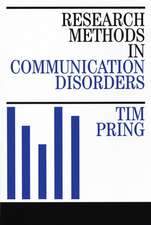Agriculture in Semi-Arid Environments: Ecological Studies, cartea 34
Editat de A. E. Hall Contribuţii de H.P. Bailey Editat de G. H. Cannell Contribuţii de L. Bowden Editat de H. W. Lawton Contribuţii de C. Dancette, D.D. Focht, K.W. Foster, G. Haaland, C. de Haan, D.W. Henderson, W.H. Isom, L.S. Jordan, W A Jury, M. Luc, J.P. Martin, R.L. McCown, D.L. Shaner, S.D. Van Gundy, J.G. Waines, L.V. Weeks, P.J. Wilke, G.F. Workeren Limba Engleză Paperback – 27 dec 2011
Din seria Ecological Studies
- 18%
 Preț: 1118.93 lei
Preț: 1118.93 lei -
 Preț: 553.72 lei
Preț: 553.72 lei - 18%
 Preț: 1680.55 lei
Preț: 1680.55 lei - 18%
 Preț: 1003.38 lei
Preț: 1003.38 lei - 20%
 Preț: 1004.71 lei
Preț: 1004.71 lei -
 Preț: 480.62 lei
Preț: 480.62 lei - 5%
 Preț: 752.26 lei
Preț: 752.26 lei - 15%
 Preț: 643.99 lei
Preț: 643.99 lei - 15%
 Preț: 644.18 lei
Preț: 644.18 lei - 15%
 Preț: 652.49 lei
Preț: 652.49 lei - 18%
 Preț: 789.83 lei
Preț: 789.83 lei -
 Preț: 382.36 lei
Preț: 382.36 lei - 15%
 Preț: 643.48 lei
Preț: 643.48 lei - 15%
 Preț: 646.30 lei
Preț: 646.30 lei - 15%
 Preț: 634.32 lei
Preț: 634.32 lei -
 Preț: 384.86 lei
Preț: 384.86 lei - 18%
 Preț: 789.98 lei
Preț: 789.98 lei - 15%
 Preț: 645.14 lei
Preț: 645.14 lei - 15%
 Preț: 649.39 lei
Preț: 649.39 lei - 18%
 Preț: 1005.43 lei
Preț: 1005.43 lei - 18%
 Preț: 949.23 lei
Preț: 949.23 lei - 15%
 Preț: 649.54 lei
Preț: 649.54 lei - 15%
 Preț: 643.34 lei
Preț: 643.34 lei - 15%
 Preț: 649.71 lei
Preț: 649.71 lei - 15%
 Preț: 638.76 lei
Preț: 638.76 lei - 18%
 Preț: 957.62 lei
Preț: 957.62 lei - 18%
 Preț: 1235.25 lei
Preț: 1235.25 lei - 18%
 Preț: 962.18 lei
Preț: 962.18 lei - 18%
 Preț: 949.23 lei
Preț: 949.23 lei - 15%
 Preț: 660.68 lei
Preț: 660.68 lei -
 Preț: 397.76 lei
Preț: 397.76 lei - 15%
 Preț: 638.24 lei
Preț: 638.24 lei - 18%
 Preț: 942.31 lei
Preț: 942.31 lei - 18%
 Preț: 1232.57 lei
Preț: 1232.57 lei - 15%
 Preț: 651.34 lei
Preț: 651.34 lei - 18%
 Preț: 952.72 lei
Preț: 952.72 lei - 18%
 Preț: 1834.27 lei
Preț: 1834.27 lei - 18%
 Preț: 1229.10 lei
Preț: 1229.10 lei -
 Preț: 423.95 lei
Preț: 423.95 lei - 18%
 Preț: 948.92 lei
Preț: 948.92 lei
Preț: 646.30 lei
Preț vechi: 760.35 lei
-15% Nou
Puncte Express: 969
Preț estimativ în valută:
123.71€ • 134.42$ • 103.98£
123.71€ • 134.42$ • 103.98£
Carte tipărită la comandă
Livrare economică 21 aprilie-05 mai
Preluare comenzi: 021 569.72.76
Specificații
ISBN-13: 9783642673306
ISBN-10: 3642673309
Pagini: 364
Ilustrații: XVI, 342 p.
Dimensiuni: 170 x 244 x 19 mm
Greutate: 0.58 kg
Ediția:Softcover reprint of the original 1st ed. 1979
Editura: Springer Berlin, Heidelberg
Colecția Springer
Seria Ecological Studies
Locul publicării:Berlin, Heidelberg, Germany
ISBN-10: 3642673309
Pagini: 364
Ilustrații: XVI, 342 p.
Dimensiuni: 170 x 244 x 19 mm
Greutate: 0.58 kg
Ediția:Softcover reprint of the original 1st ed. 1979
Editura: Springer Berlin, Heidelberg
Colecția Springer
Seria Ecological Studies
Locul publicării:Berlin, Heidelberg, Germany
Public țintă
ResearchCuprins
1 Ancient Agricultural Systems in Dry Regions.- 1.1 Introduction.- 1.2 The Beginnings of Agriculture.- 1.3 Ancient Agricultural Systems in Dry Regions of the Old World.- 1.4 Ancient Agricultural Systems in Dry Regions of the New World.- 1.5 Conclusions.- References.- 2 Development of Present Dryland Farming Systems.- 2.1 Introduction.- 2.2 Geographic Aspects of the World’s Semi-Arid Tropics.- 2.3 Dryland Farming Systems in the Semi-Arid Tropics.- 2.4 Geographic Aspects of the World’s Semi-Arid Mid-Latitude Lands (Steppe).- 2.5 Dryland Farming Systems in the Mid-Latitude Steppes.- 2.6 Perception of the Semi-Arid Environment.- 2.7 The Future of Dryland Farming Systems.- References.- 3 Semi-Arid Climates: Their Definition and Distribution.- 3.1 Introduction.- 3.2 Meteorological Factors Contributing to Aridity and Humidity.- 3.3 Defining Semi-Arid Regions.- 3.4 Thermal Regions of Semi-Arid Zones.- 3.5 Conclusions.- References.- 4 Agroclimatology Applied to Water Management in the Sudanian and Sahelian Zones of Africa.- 4.1 Introduction.- 4.2 Climatology and the Hydrologic Budget of Cropping Systems.- 4.3 Application of Agroclimatology to Agriculture in Senegal.- 4.4 Future Strategies.- References.- 5 Microbiological and Biochemical Aspects of Semi-Arid Agricultural Soils.- 5.1 Introduction.- 5.2 Microbial Ecology and Soil Physical Properties.- 5.3 Organic Matter.- 5.4 Mineral Nutrition of Plants.- 5.5 Future Directions for Research.- References.- 6 Crop Adaptation to Semi-Arid Environments.- 6.1 Introduction.- 6.2 Water as a Limiting Factor.- 6.3 Adaptive Attributes for Semi-Arid Environments.- 6.4 Developing Cultivars for Semi-Arid Environments.- 6.5 Future Strategies for Research.- References.- 7 Water Transport Through Soil, Plant, and Atmosphere.- 7.1 Introduction.-7.2 Components of the Soil-Plant-Atmosphere Continuum.- 7.3 Models of the Soil-Plant-Atmosphere Continuum.- 7.4 Conclusions.- References.- 8 Crop Management in Semi-Arid Environments.- 8.1 Introduction.- 8.2 Management Systems.- 8.3 Cultural Systems.- 8.4 Cropping Methods.- 8.5 Crop Selection.- 8.6 Planting Techniques.- 8.7 Crop Fertilization.- 8.8 Crop Rotation.- 8.9 Vertebrate Pest Control.- 8.10 Harvesting.- 8.11 Future Directions of Research.- References.- 9 Soil Management in Semi-Arid Environments.- 9.1 Introduction.- 9.2 Differing Responses of Soils to Tillage.- 9.3 Objectives of Soil Management.- 9.4 Tillage and Soil Water.- 9.5 Soil Fertility.- 9.6 Tillage and the Soil Microenvironment.- 9.7 Erosion Control.- References.- 10 Erosion and Its Control in Semi-Arid Regions.- 10.1 Introduction.- 10.2 Erosion by Water.- 10.3 Erosion by Wind.- 10.4 Erosion Control Measures.- References.- 11 Diseases and Nematode Pests in Semi-Arid West Africa.- 11.1 Introduction.- 11.2 Principles of Disease and Nematode Management.- 11.3 Diseases and Nematodes of Specific Food Crops.- 11.4 Future Directions for Research in Disease and Nematode Pest Control in Semi-Arid Africa.- References.- 12 Weed Control.- 12.1 Losses from Weeds.- 12.2 Weed Characteristics.- 12.3 Management of Weeds.- 12.4 Herbicides.- 12.5 Interaction of Weed Control and the Environment.- 12.6 Control of Specific Weeds.- 12.7 General Conclusions.- References.- 13 The Interaction Between Cultivation and Livestock Production in Semi-Arid Africa.- 13.1 Introduction.- 13.2 Linkages Between Crop and Livestock Production.- 13.3 Selected Cases of Cropping-Livestock Systems.- 13.4 Trends in Organization of Linkages.- 13.5 Conclusions.- References.- Taxonomic Index.










